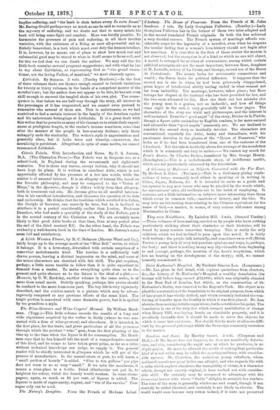Cebetis Tabula. With Introduction and Notes. By C. S. Jerram,
M.A. (The Clarendon Press.)—The Tabula was in frequent use, as a school-book, in England during the seventeenth and eighteenth centuries. Nor is there any reason, except fashion, why it should not have kept its place. It is written in excellent Attic, which is not appreciably affected by the presence of a few late words, while the matter is of unusual interest. It is an allegory of human life, based on the Socratic philosophy, and may be compared to the "Vision of Mirza," in the Spectator, though it differs widely from that allegory, both in treatment and aim. Mr. Jerram gives us all needful informa- tion in his excellent introduction, and discusses the question of its date and authorship. He thinks that the tradition which ascribed it to Cebes, the disciple of Socrates, can scarcely ho true, but he is inclined to attribute it to a period considerably earlier than Lucian. Professor Drescher, who had made a speciality of the study of the Tuk/o, put it in the second century of the Christian era. We are certainly more likely to find good Attic books at that time, than at any period after the end of the third century B.C. On the other hand, tho Tabula was evidently a well-known book in the time of Lucian. MnsTerram's notes seem full and satisfactory.


































 Previous page
Previous page